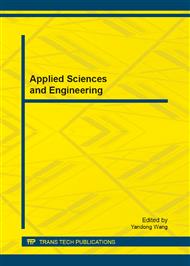[1]
ZHU Jing. The measure and analysis of Electricity inspection. Guide of Sci-tech Magazine. Vol. 32(2010), p.241, 253.
Google Scholar
[2]
LV Xiang-bo. The prevention method of electric larceny by Permanent magnet magnetic. Rural Electrification. Vol. 7(2011), pp.49-50, 52.
Google Scholar
[3]
SHAO Qiang, LI Dan, LIU Xiao-xiang. The Research and Application of Single-phase Prevent Electricity from Theft Watt-hour Meter's Principle. Electrical Measurement &Instrumentation. Vol. 46(2009)pp.51-62.
Google Scholar
[4]
Electricity metering equipment (AC) - General requirements, tests and test conditions - Part 11: Metering equipment.
DOI: 10.3403/02838470u
Google Scholar
[5]
Electricity metering equipment (a. c. ) - Particular requirements - Part 11: Electromechanical meters for active energy (classes 0, 5, 1 and 2).
DOI: 10.3403/02845248
Google Scholar
[6]
Electricity metering equipment (a. c. ) - Part 1: General requirements, tests and test conditions - Metering equipment (class indexes A, B and C).
DOI: 10.3403/30138832
Google Scholar
[7]
Osamu TakedaTom H. OkabeYoshiaki Umetsu. Recovery of neodymium from a mixture of magnet scrap and other scrap. Journal of Alloys and Compounds. 408. 412(2006). pp.112-116.
DOI: 10.1016/j.jallcom.2005.04.094
Google Scholar
[8]
Yuki SatoRichard Packard. dc superconducting quantum interference device based neodymium magnet displacement sensor for superfluid experiments Review of Scientific InstrumentsVol. 80(2009), pp.254-259.
DOI: 10.1063/1.3129942
Google Scholar
[9]
Bruce MattsonDouglas Mulford. Microscale Demonstration of the Paramagnetism of Liquid Oxygen with a Neodymium Magnet Journal of Chemical EducationVol. 84(2007), pp.77-82.
DOI: 10.1021/ed084p1296
Google Scholar
[10]
Charles MalerichPatricia K. Ruff. Demonstrating and Measuring Relative Molar Magnetic Susceptibility Using a Neodymium Magnet Journal of Chemical EducationVol. 81(2004), p.1115.
DOI: 10.1021/ed081p1155
Google Scholar


